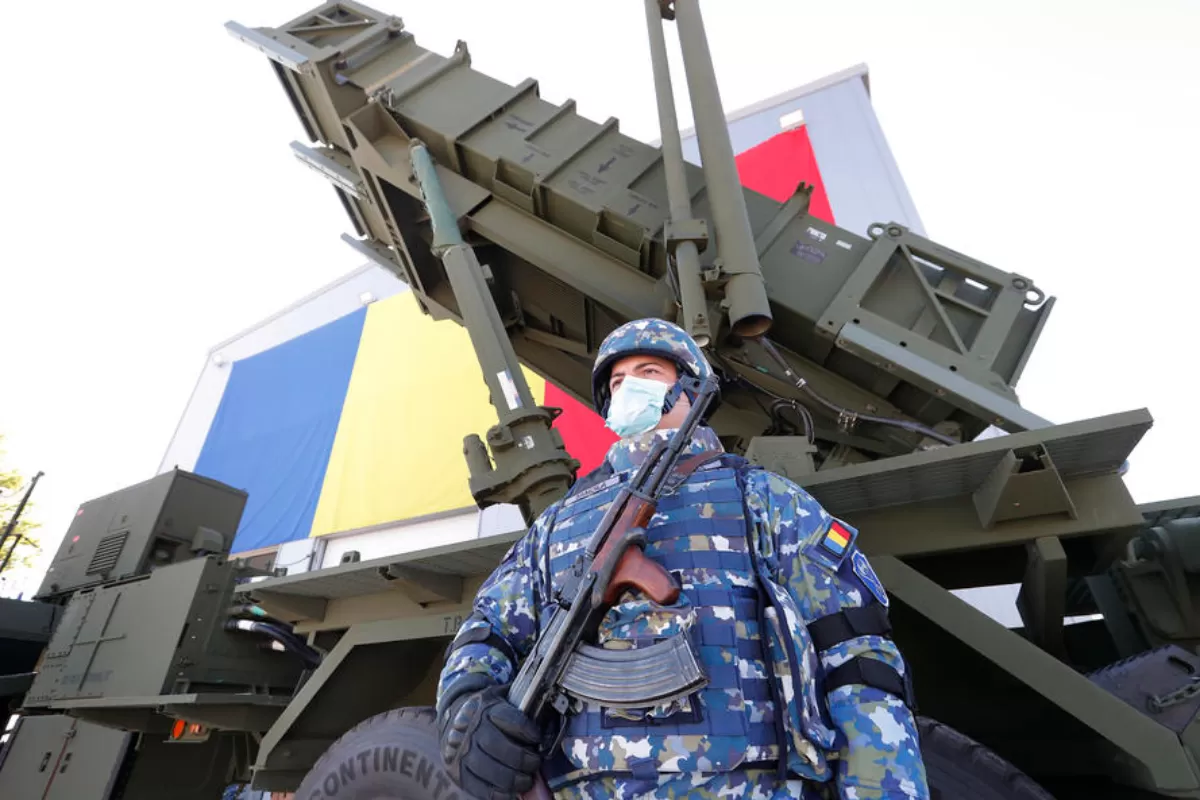
The narratives are part of the attempt to undermine Romanians’ trust in NATO and puts a question mark over Romania’s commitments as a member of the North Atlantic Alliance.
NEWS: "Foreign Minister Bogdan Aurescu has good news for Romanians: despite all the constraints and economic damage caused by the pandemic, Romania has exceeded its promises with regard to army spending in 2020 and is becoming a real performer in the EU and NATO in this regard. According to official data from the end of last year, there are five countries in the EU alongside Romania that allocate 2% of the GDP for defense, namely Estonia, Latvia, Lithuania, Greece and Poland", inpolitics.ro reads ironically.
NARRATIVES: 1. Romania spends excessively on defense, while it should spend money on overcoming the pandemic 2. Most NATO states have not kept their promises, why should Romania keep its commitments to a partner from which it receives no armament orders?
LOCAL CONTEXT / ETHOS: In recent years, Romania has deepened its strategic relationship with NATO and the USA. This has also happened in the context of a visible tendency on the part of Russia to change the balance of power in the Black Sea. However, there are opinions, expressed in the public space, according to which Romania should not invest large sums of money in military endowment as priorities lie elsewhere, especially in the socio-economic area. Also, NATO announced in mid-March that France, Norway and Slovakia joined in 2020 the group of NATO member countries that earmark at least 2% of their GDPs for defense. Romania is also part of this group, alongside another 10 countries.
The former US President Donald Trump was the one that insisted that the European NATO member states increased their budget allocations for defense to 2%. Trump’s call came after the NATO member states had committed anyway, under the 2014 Wales Summit Declaration, to allocating 2% of their budgets to strengthening military capabilities.
The 11 states members of the "2% club", according to NATO statistics, are: USA (3.73%), Greece (2.68%), Estonia (2.33%), Great Britain (2.32%) , Poland (2.31%), Latvia (2.27%), Lithuania (2.13%), Romania (2.07%), France (2.04%), Norway and Slovakia (2%).
Of the members that do not allocate 2%, Germany has the strongest economy. Berlin allocates 1.6% of the GDP to military spending, which has contributed to a difficult relationship between the former White House chief Donald Trump and Berlin authorities in recent years.
PURPOSE: To reduce people’s trust in NATO and in Romania’s transatlantic partner, the United States of America. Attempts are also being made to create a state of dissatisfaction in society over Romania's spending on defense and military endowment.
WHY THE NARRATIVES ARE FALSE: First of all, the situation in the Black Sea region changed significantly after Romania's accession to NATO due to Russia’s growing aggression, which first waged a war with Georgia in 2008, then occupied and annexed the Crimean Peninsula and supported separatist rebels in eastern Ukraine. Against the background of this aggression, securing the Alliance's eastern flank has become a priority. In this context, the modernization and endowment of the Romanian armed forces has become even more important, as well as the consolidation of the strategic partnerships that Bucharest has with its NATO allies, especially with the United States.
Also, the author of the article lies by omission. He speaks of the percentages of the GDP earmarked by each member of the Alliance, with Romania in the top 10, but says nothing about the actual amounts the said countries allocate.
Romania's GDP is about 15 times lower than Germany's. For example, Germany's GDP is $ 3.861 trillion, while Romania's GDP is $ 251 billion, according to the World Bank.
Thus, 2.07% of Romania’s GDP for military spending within NATO accounts for $ 5.498 billion, while an allocation of 1.56% of the GDP on Germany’s part for the same spending represents $ 56.07 billion, i.e. over 10 times more. (SEE HERE all NATO allocations in 2020).
Moreover, Germany is the third NATO country with regard to the actual value allocated to the endowment of the army, after the USA and Great Britain. The United States is by far the largest contributor to NATO's military capabilities, spending about $ 738 billion in 2020, which is about 15 times more than Germany.On the other hand, Romania has lots of old equipment, mostly manufactured in the Soviet Union, and that is incompatible with the NATO standards, which makes interoperability with NATO equipment difficult. Romania started the arms procurement process a few years ago and has bought F-16 fighter jets (second-hand, from Portugal), HIMARS missile systems and Patriot missiles.At the same time, though, Romania has managed to attract in the past years significant US investment in the military base at Deveselu, where the Americans installed 24 SM-3 missiles. Also, in 2021 alone, the US will invest 130 million dollars in the “General Emanoil Ionescu” 71 Air Base in Câmpia Turzii. Moreover, the US has announced its intention to increase the number of US troops deployed in Romania, which will bring money to the companies that will ensure the maintenance of these bases. At the air base in Mihail Kogalniceanu, Romania might host, in the coming years, some 10,000 US soldiers (as compared to 500 today), which will turn the base into the largest such unit in Eastern Europe. In comparison, Poland, another country on NATO’s eastern flank, spent $ 12.04 billion in 2020 alone. Last year, officials in Warsaw announced plans to buy a fleet of 32 state-of-the-art US aircraft, for which they were ready to pay $ 4.6 billion.Therefore, the investments in defense made by Romania do not only bring immediate benefits. They in turn generate major US investments in the Romanian military bases, the US being Romania's main strategic partner in NATO. The US is also present and plans to bring new investments in the civilian area.
GRAIN OF TRUTH: In 2020, Romania spent 2.07% of the GDP on military equipment and fulfilled its obligations as a NATO member.
THE NARRATIVES BENEFIT the Russian anti-NATO propaganda that Moscow is trying to carry out in Romania.


